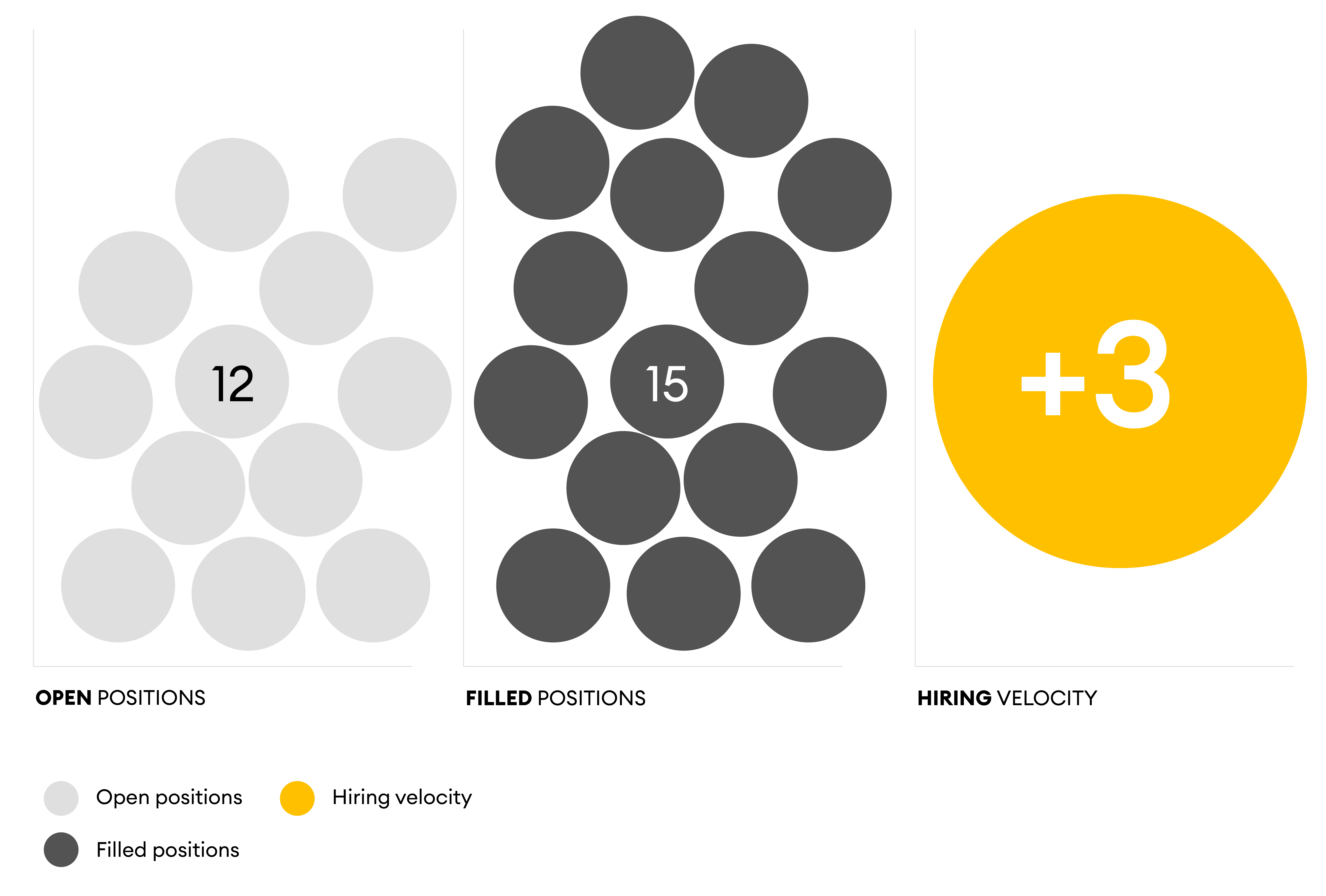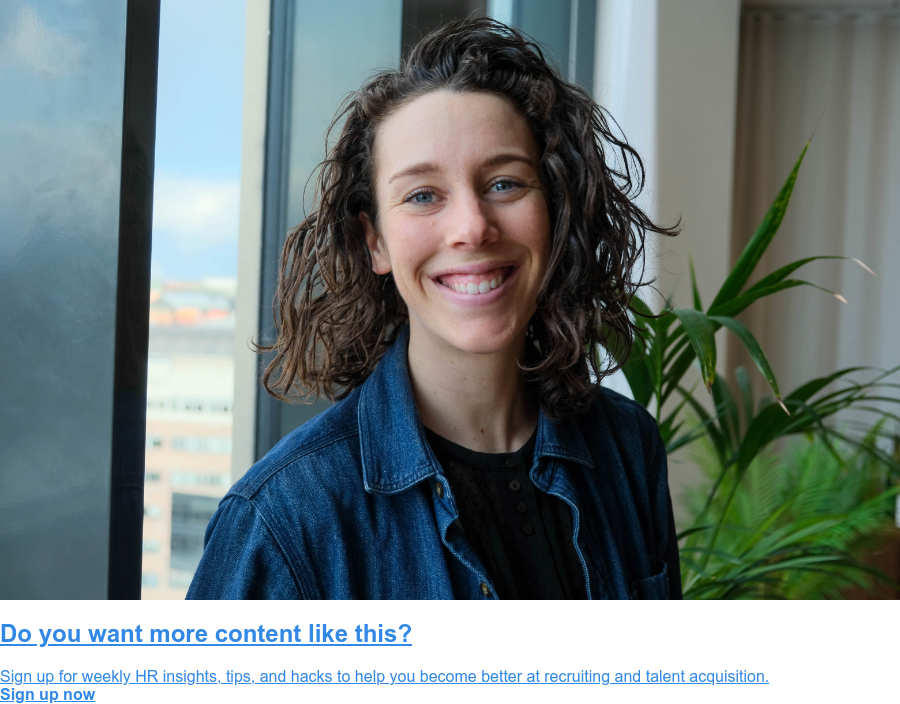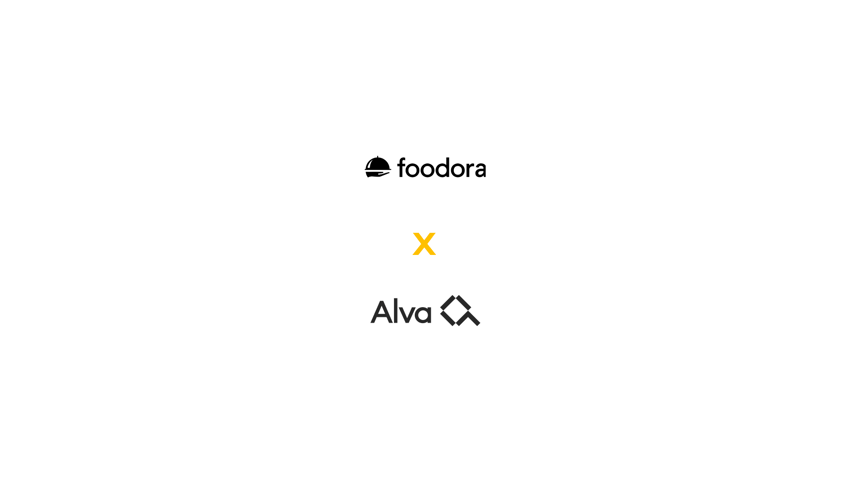Imagine it takes your hiring team months to fill an open position. How would your team fare, considering they need to spend more time covering for the role that needs filling?
Probably not great.
A dragged-out hiring process can eat into your company's margins and hurts team morale. And given that the best talent typically gets snapped up in about ten days, you might find yourself with a narrow candidate pool. Or worse, you might completely miss out on hiring top stars.
Not to mention, a slow hiring process may exhaust candidates, and harm their overall experience with your employer brand.
The lesson: If you want to efficiently engage and attract top talent, clarity and accountability should be central to your decision-making. This is where hiring velocity comes in. Let's explore how tracking this underrated metric can help you save time and money, and cultivate a seamless hiring process.
Hiring velocity - is it the same as time to hire?
Contrary to popular opinion, hiring velocity is not the same thing as time to hire. While time to hire simply means the amount of time it takes for a candidate to get hired (from first contact to accepting the offer), hiring velocity is a talent acquisition metric that measures a change in position over the change in time.
Simply put, this metric helps you keep tabs on the number of openings you have versus the number of fills you´ve achieved in a given time period.
Overall, keeping an eye on recruitment velocity can help you with the following:
- Gain an understanding of how quickly candidates move up the pipeline for interviews
- Gather insight into how efficiently your TA team makes decisions at each hiring stage
- Identify what level of your recruitment funnel needs optimising for maximum speed
- Lower the risk of losing top talent to the competition
- Hit targets faster and maximise your ROI
Why recruitment velocity matters
Say you're the CEO of a tech startup and are reviewing your company's annual growth targets.
Some questions you´ll want to ask your TA team include:
- Are sales people hired in time to meet next year’s growth targets?
- Are software developers hired in time to develop a product?
- Are enough employees being hired in time to manage expected delivery demand, particularly during the holiday or peak season?
Remember, it's not about the time it takes to hire. What matters in this case is whether talent is procured quickly enough to meet your company goals, without losing sight of accountability.
Understanding this means that you as the CEO can nudge TA teams and executives to think more strategically about their hiring objectives. Effectively, this enables you to set realistic target start dates based on the type of role you´re recruiting for.
How to calculate your hiring velocity
A simple way to do this is to look at the number of positions opened versus the number of hires over a set time. Say you opened 12 positions this week, but you managed to fill 15 positions. Your hiring velocity would be +3, irrespective of your current requisition inventory. In other words, when calculating hiring velocity, you don't factor in positions that are already open or that are in inventory.

As a high-level decision maker, you should always aim for your TA team to fill as many positions as are open. While a good hiring velocity rate translates to successfully meeting demand head-on and lowering your hiring inventory, a bad rate means a poor hiring inventory.
Ultimately, the C-suite loves this metric because it showcases your TAs team’s ability to meet and surpass hiring demand, allowing for a more accurate and cost-friendly hiring strategy.
Setting targets
A helpful way to think about targets is to look at how many open positions you have in a given year, then fill as many of these as possible. But remember, you usually have an existing backlog to refer to, so you don't have to fill every position you’ve opened. While your objective should be to exceed that number, realistically, it's not always possible.
One last thing to flag here. There’s no “one” hiring velocity rate everybody should strive towards. This is because your hiring velocity rate will depend on what sector you’re in, how big your company is, and, of course, your budget.
How to improve hiring velocity
Improving your hiring velocity boils down to having a smooth, well-oiled hiring machine in place. It's as simple as that. To meet hiring demand, start from the very beginning and think about your current hiring processes.
Does your TA team spend ages manually sifting through hundreds of CVs and engaging in mundane, repetitive tasks? Or maybe they're struggling with finding top talent, or are losing candidates early in the hiring process? Chances are, if you don´t address these problem areas first, you won't see any major improvements in your hiring velocity.
So how to improve your hiring velocity?
- Map out your ideal candidate profile. Have a clear requirement profile in place and do your homework in advance. This will help your TA team keep the time to hire down once they start interacting with candidates.
- Have a dedicated and informed hiring team in place. Involve your recruiters, colleagues, stakeholders, and other key decision makers from the start. Ensure everyone who participates in the hiring process knows what criteria they´re supposed to evaluate and prioritise. This will help keep your entire team aligned with company goals, and share accountability when hiring the best people.
- Define a strategic hiring process. Create a company-wide playbook for your hiring process and keep intent central to each step. Ask yourself some hard-hitting questions like, why should we involve this team member or step as part of the evaluation process? If you can't answer, chances are you need to rethink the way you organise your recruitment process.
- Kick-off with a proper startup meeting. Spend some time on preparations and ensure your team knows exactly what to look for, and what success looks like.
- Keep everyone informed about important updates and regularly share progress reports, either through a shared Slack channel, weekly meetings (or both!).
- Have weekly placeholders for interviews, enabling your TA team to book interviews quickly and move seamlessly to the next step of the hiring process.
- Have a clear recruitment process in place and stick to it. Ideally, your team should know whether they will progress with a candidate or not after each step.
Helpful ways to refine your hiring process
- Write inclusive job ads. Ensure your copy incorporates gender-neutral terms, steers clear of jargon and wishlists, and is written with the candidate in mind.
- Widen your candidate pool. When screening applicants, cast the net wide and look beyond a candidate´s years of experience, gender, ethnicity, or age when screening. Instead, look for potential, and evidence-based predictors of job performance.
- Conduct structured interviews. Write a list of standard questions to ask shortlisted applicants. Jot down the types of answers you´re looking for, and introduce a system of rating the candidate´s responses. Fun fact for you: Structured interviews have been proven to reduce bias, fuel diversity, and improve the candidate experience (more on the topic here).
- Build your employer branding. While companies scramble to hire for growth, high-calibre candidates have more options than ever. And amidst the Great Resignation, attractive employer branding can make or break your candidate pipeline (for tips on creating a first-class employer brand, click here).
- Automate your hiring process. Recruitment automation is a powerful way to boost your team's productivity, save time and money, speed up your hiring, and create a streamlined, candidate-centric process.
Final thoughts
Overall, keeping an eye on your hiring velocity will undoubtedly help your TA team perform better, meet demand head-on, and ultimately, strengthen your hiring process. However, the metric should not be viewed in isolation when thinking about upping your recruitment game. For a well-groomed hiring process, it's helpful to go back to basics and think about your overarching strategy.
Ask yourself some soul-searching questions about how you source, screen, and move candidates through the funnel, and how your team works together. Ultimately, it all boils down to how you attract, hire, and retain talent.
Supercharge your hiring velocity with Alva
Looking to speed up your hiring? Alva´s all-in-one software helps you to automate your screening process from start to finish, move candidates seamlessly along the pipeline, and find your next superstar.
Ready to find your next hire efficiently? Start your free trial with Alva today.






